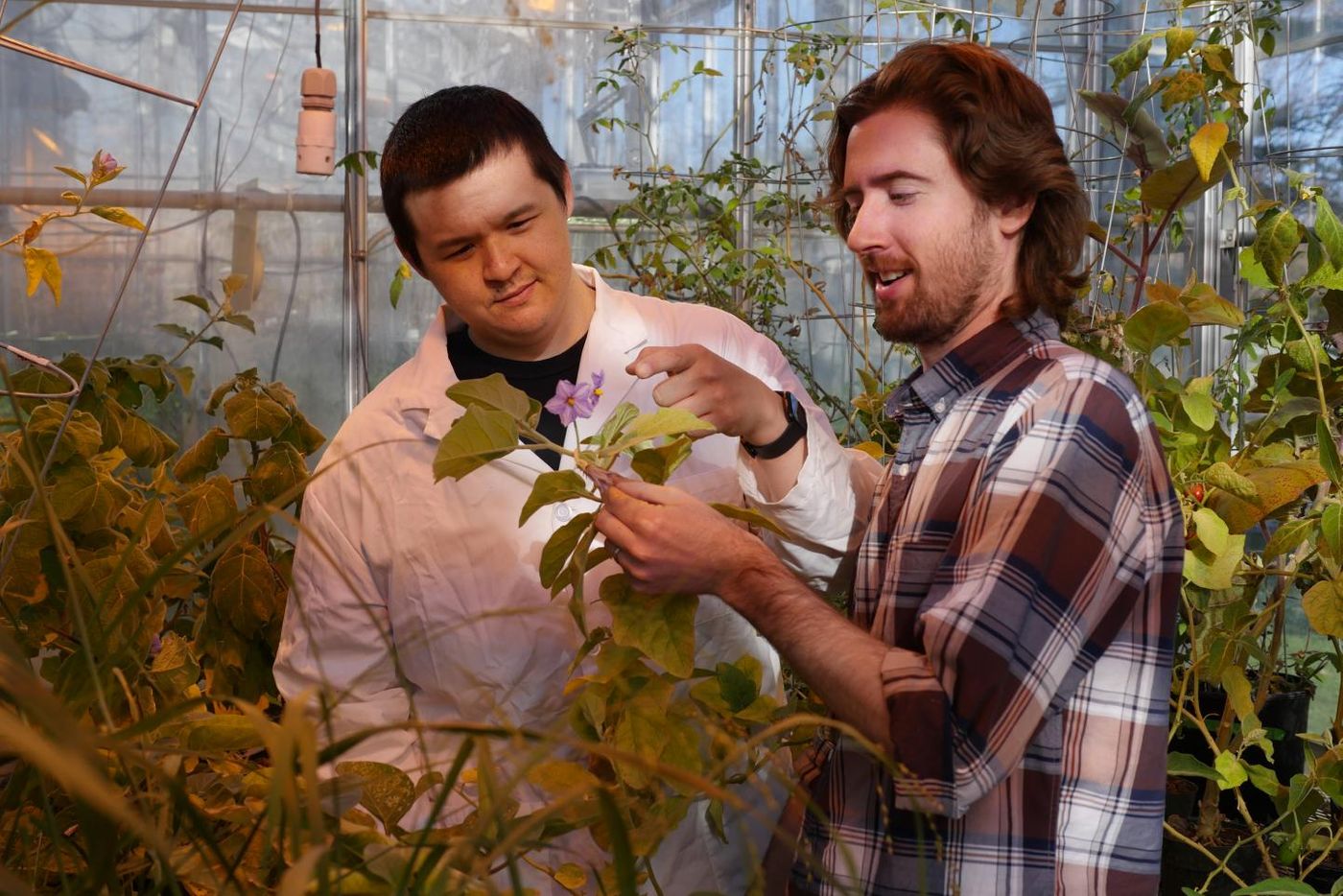Using Wild Plant Traits to Reduce Pesticide Use
Pesticides are a part of agriculture, and while they are important to crop production, some can be detrimental to human health and the environment. Scientists at Michigan State University may have found one way to make a modest reduction in pesticide use. They identified a gene in wild tomatoes that might be incorporated into the modern crop, which helps repel insects. The findings have been reported in Science Advances.
“We identified a gene that exists in this wild plant, but not in cultivated tomatoes,” explained Rob Last, MSU Barnett Rosenberg Professor of plant biochemistry.” The gene identified in this work results in the production of a sticky molecule on the hairs of a wild tomato plant found in the Atacama Desert. The plant, Solanum pennellii, lives in one of the driest places on earth, and the sticky stuff on their hairs help keep insects away, helping the plant to survive.
“The invertase-like enzyme creates insecticidal compounds not found in the garden-variety tomato. This defensive trait could be bred into modern plants,” added Last. Plant breeders have taken traits like stickiness out of plants, noted Last, so they don’t make as many of those sticky chemicals.
"We want to make our current tomatoes adapt to stress like this wild tomato, but we can only do that by understanding the traits that make them resistant," said the co-lead author of the work, graduate student Bryan Leong. "We are using evolution to teach us how to be better breeders and biologists. For example, how can we increase crop yield by creating a pest-resistant plant and eliminate the need to spray fields with insecticides?"
Gene editing tools like CRISPR enabled the researchers to learn more about the characteristics of the wild plant. They identified an enzyme that was found only in cells on the tips of the plant’s sticky hairs. This molecule is like an invertase, enzymes that are involved in development and growth in plants. This enzyme can aid in the synthesis of insecticidal compounds in the wild tomato.
"It is a race over evolutionary time between the consumed and the consumers," said Leong. "Insects benefit by eating the plants. Yet, evolution favors plants that make more seeds and pass on their genes to another generation. We hope to take the defensive lessons plants already learned and apply them to existing crops."
This discovery is a step toward understanding the natural insect resistance of Solanum pennellii plants. It will help us learn more about how the wild tomato got that ability, and how we might be able to use it in tomato crops.
"Plants are amazing biochemical factories that make many unusual compounds with protective, medicinal and economically important properties," said Cliff Weil, a program director at the National Science Foundation. "In this study, the authors found that a common enzyme has been repurposed for forming such compounds, giving us important insight into how life is able to bend existing tools for novel uses."
CRISPR is expected to change agriculture. Several plants have already been altered using the tool, including tomatoes (described in the video above). One scientist that helped create the technology, Jennifer Doudna, has commented that CRISPR foods will probably reach shelves in about five years, as noted in the following video.
Sources: AAAS/Eurekalert! via Michigan State University, Science Advances









